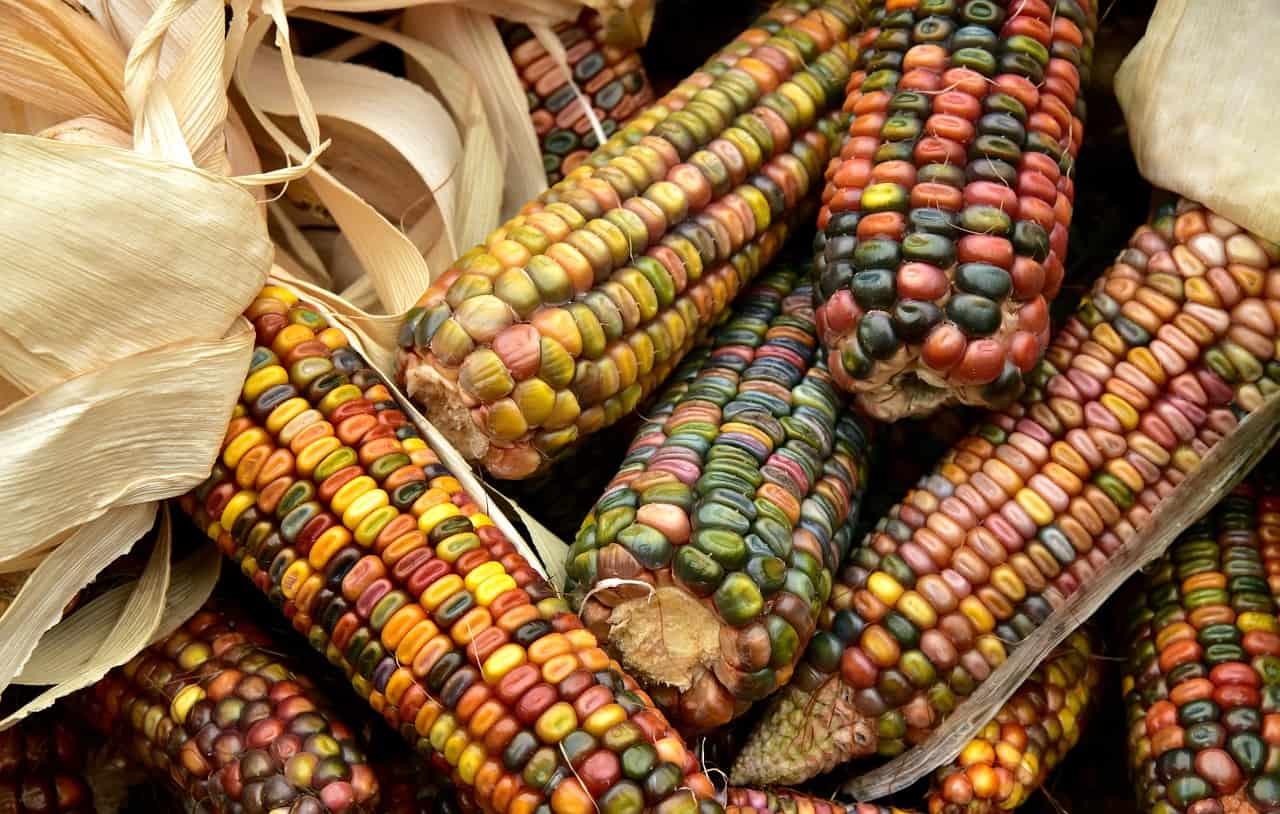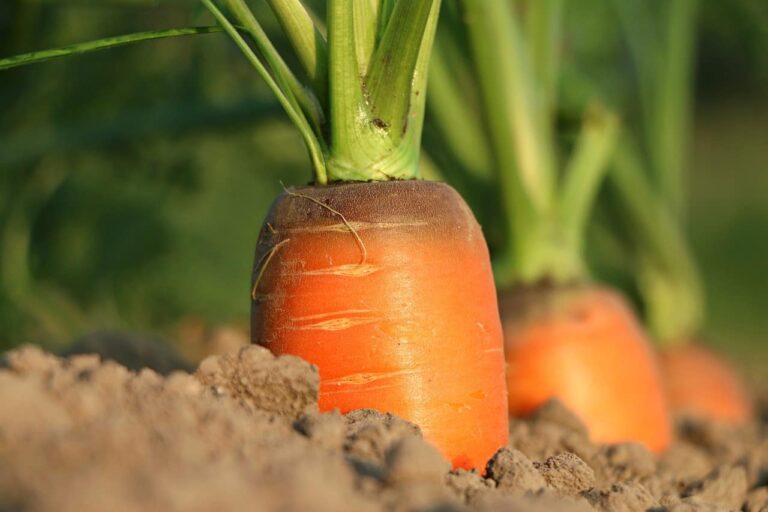
Crop Rotation for Sustainability
Crop rotation is an essential agricultural practice that involves the systematic alternation of crop types in a particular area over time.
It is a sustainable farming method that aims to maintain and improve soil health, enhance crop productivity, and minimize the negative impacts of monoculture on the environment. By changing the type of crops grown in a field each planting season, crop rotation helps to manage pests, diseases, and weeds, optimize the availability of nutrients, and promote soil water conservation.
This practice also contributes to the reduction of greenhouse gas emissions and the preservation of soil organic matter. Overall, the implementation of long-term crop rotation systems is crucial for the sustainable development of agriculture, as it provides economic benefits, enhances the resilience of farming systems to climate risks, and promotes the efficient use of resources while minimizing the reliance on external inputs such as chemical fertilizers.
Benefits of Crop Rotation for Sustainability
Crop rotation is a valuable agricultural practice that offers numerous benefits for sustainability. One of the key advantages of crop rotation is its ability to improve soil nutrients. By planting different crop types in rotation, it helps replenish and balance essential nutrients in the soil, reducing the need for external inputs like chemical fertilizers. This not only improves soil health but also enhances crop productivity and grain production.
In addition, crop rotation plays a crucial role in reducing greenhouse gas emissions and preventing soil erosion. By alternating between crops with different root structures, it helps maintain soil structure and organic matter content, which in turn enhances carbon storage and mitigates the environmental impacts of agriculture. Furthermore, the practice of crop rotation helps conserve soil water, as varied crops have different water use efficiencies. This helps retain moisture in the soil, reducing the need for additional irrigation and improving water resource management.
Furthermore, crop rotation acts as a natural pest control mechanism. By diversifying crops, it disrupts the life cycle of pests, reducing the need for chemical pesticides. This not only helps protect the environment and maintain soil microbial balance but also reduces the health risks associated with pesticide use.
Overall, crop rotation provides a range of sustainability benefits, including improved soil nutrients, reduced emissions, erosion prevention, moisture retention, and pest control. By incorporating this practice into agricultural production, farmers can enhance crop yields, promote sustainable development, and contribute to a more resilient and environmentally friendly farming system.
Types of Crop Rotations
Crop rotation involves the systematic sequencing of different crops on the same land over a period of time. There are several types of crop rotations that farmers can implement to promote sustainable agriculture.
One common approach is a long-term crop rotation, which involves alternating between different crop types over several years. This allows for the optimization of soil health, as each crop has varying nutrient requirements and contributes different organic matter to the soil. Another approach is a diversified crop rotation system, which involves planting a variety of crops in a particular order. This helps reduce the risk of pest and disease buildup, as pests that are specific to one crop may not thrive when other crops are introduced.
Additionally, pulse crop adaptation involves incorporating leguminous crops, such as peas or lentils, into the rotation. This not only provides economic benefits but also increases nitrogen content in the soil, reducing the need for external inputs like chemical fertilizers.
Overall, implementing different types of crop rotations can greatly enhance crop productivity, soil health, and the long-term sustainability of agricultural practices.
Continuous Monoculture
Continuous monoculture is a common farming practice in modern agriculture where the same crop is grown on the same piece of land year after year without any variation. While it may seem efficient and convenient, this practice can have negative impacts on soil health and sustainability.
One of the major issues with continuous monoculture is the depletion of soil fertility. Growing the same crop repeatedly can deplete specific nutrients from the soil, leading to imbalances and reduced productivity over time. Additionally, continuous monoculture increases the vulnerability of crops to pests and diseases. By growing the same crop continuously, pests and diseases that specifically target that crop can build up in the soil, making it harder to control them and resulting in increased reliance on chemical interventions.
Another negative impact of continuous monoculture is soil erosion. Without crop rotation, the same root system is continuously present in the soil, making it prone to erosion from wind and water. This can lead to the loss of topsoil and its valuable organic matter, which are essential for maintaining soil structure and nutrient content.
To ensure soil health and sustainability, it is important to move away from continuous monoculture and adopt practices such as crop rotation. Crop rotation involves growing different crops in a planned sequence, which helps replenish soil nutrients, control pests and diseases, and prevent soil erosion. By diversifying crops, farmers can enhance soil health, reduce the need for external inputs like chemical fertilizers, and promote sustainable agricultural practices.
Continuous monoculture can have detrimental effects on soil health and sustainability. Adopting crop rotation as a farming practice can help mitigate these negative impacts, ensuring the long-term productivity and health of the soil.
Sequential Monoculture
Sequential monoculture refers to the practice of growing the same crop continuously on a piece of land for several seasons without rotation. This method has become prevalent in modern agriculture due to its potential for maximizing crop yield and streamlining production processes. However, the consequences of sequential monoculture are significant and can have a long-lasting negative impact on soil health and overall agricultural sustainability.
One of the major consequences of sequential monoculture is soil degradation. Growing the same crop repeatedly depletes specific nutrients from the soil, leading to imbalances and reduced fertility over time. This depletion can disrupt the soil’s natural composition and affect its ability to retain water and nutrients, ultimately impacting crop productivity.
Furthermore, sequential monoculture increases the risk of pests and diseases. When the same crop is continuously grown, pests and diseases that target that specific crop can build up in the soil. This buildup creates favorable conditions for these issues, making it harder to control them and increasing the reliance on chemical interventions.
To counter the consequences of sequential monoculture, crop rotation is an essential practice. Crop rotation involves growing different crops in a planned sequence, allowing for the replenishment of soil nutrients and the control of pests and diseases. By diversifying crop species, farmers can enhance soil health, reduce the need for external inputs, and promote sustainable agriculture.
Although sequential monoculture may seem beneficial in terms of maximizing crop yield, the long-term consequences such as soil degradation and increased susceptibility to pests and diseases make it an unsustainable practice. Adopting crop rotation practices is crucial to maintaining soil health, ensuring sustainable agricultural production, and mitigating the negative impacts of sequential monoculture.
Intercropping
Intercropping is a sustainable agricultural practice that involves growing multiple crops together within a field or plot. This technique harnesses the benefits of diversity and complexity to enhance crop productivity and promote ecological balance. By combining different crops in an intercropping system, farmers can optimize resource utilization and improve overall sustainability.
One of the key advantages of intercropping is the improvement of soil structure and fertility. Different crops have varied root systems with varying depths and structures. This diversity helps create a more balanced soil environment by loosening compacted soil, enhancing water infiltration, and increasing the organic matter content. Furthermore, intercropping can enhance nutrient cycling as different crops have different nutrient requirements, reducing the risk of nutrient depletion and improving overall soil health.
Intercropping also acts as a natural weed suppressant. When multiple crops are grown together, they form a dense canopy that shades the ground, limiting weed growth and competition for resources. This can significantly reduce the need for herbicides and minimize weed-related yield losses.
Another advantage of intercropping is its ability to manage pests and diseases. Companion planting, a type of intercropping, involves the strategic placement of crops that repel or deter pests or attract beneficial insects. This natural pest management practice reduces the dependence on chemical pesticides, promotes biodiversity, and helps maintain a balanced ecosystem.
Examples of intercropping systems include growing legumes alongside cereals, where the legumes fix atmospheric nitrogen, providing a natural source of fertilizer for the cereals. Another example is planting tall crops with shorter ones, allowing for efficient use of sunlight and space.
Intercropping is a valuable agricultural practice that promotes diversity and complexity within cropping systems. It offers numerous benefits, such as improved soil structure, enhanced nutrient cycling, weed suppression, and natural pest management. By embracing intercropping, farmers can significantly enhance their agricultural productivity while reducing their reliance on external inputs and promoting sustainable farming practices.
Relay Intercropping
Relay intercropping is a cropping system that involves growing two or more crops in a sequence, where one crop is sown after another has already established. This practice increases the diversity and complexity within a cropping system, providing numerous benefits for sustainable agriculture.
One of the key advantages of relay intercropping is improved nutrient cycling. By growing multiple crops in a sequence, each crop has different nutrient requirements, allowing for efficient utilization of soil nutrients. This reduces the risk of nutrient depletion and enhances overall soil fertility. Additionally, the root systems of different crops vary in depth and structure, promoting the uptake of nutrients from different soil layers and improving nutrient availability.
Another benefit of relay intercropping is weed suppression. When multiple crops are grown together in a sequence, they form a dense canopy that shades the ground, limiting weed growth and competition for resources. This reduces the reliance on herbicides and minimizes yield losses due to weed infestation.
Pest and disease management is also enhanced in relay intercropping systems. By diversifying the crop sequence, it disrupts the life cycles of pests and diseases, reducing their population and damage. Additionally, certain crops can act as repellents or attract beneficial insects, providing natural pest control without the need for chemical pesticides.
Relay intercropping is a sustainable agricultural practice that increases crop diversity and complexity within a cropping system. It promotes efficient nutrient cycling, weed suppression, and pest and disease management, reducing the reliance on external inputs and enhancing overall crop productivity.
Alley Cropping
Alley cropping is a sustainable agricultural practice that involves growing crops between rows of trees or shrubs, providing both economic and environmental benefits. The trees or shrubs in alley cropping systems serve multiple purposes. They can provide shade, protecting the crops from excessive heat and reducing water evaporation from the soil. Additionally, they act as windbreaks, minimizing wind erosion and protecting crops from wind damage.
One of the main advantages of alley cropping is the enhanced biodiversity it promotes. The trees and shrubs attract beneficial insects and birds, creating a more balanced ecosystem that naturally controls pests and diseases. This reduces the need for chemical pesticides, making alley cropping a more environmentally friendly option.
In terms of economic benefits, alley cropping can significantly improve crop yields. The trees and shrubs help to improve soil fertility through nutrient cycling. They draw up nutrients from deeper soil layers, which are then made available to the crops. This leads to increased crop productivity and reduced reliance on chemical fertilizers.
Furthermore, alley cropping systems contribute to climate change mitigation by sequestering carbon. The trees and shrubs in the system capture and store atmospheric carbon, reducing greenhouse gas emissions. Additionally, alley cropping helps to reduce soil erosion by providing ground cover and anchoring the soil, preventing runoff during heavy rainfall.
Overall, alley cropping is a sustainable agricultural practice that offers a range of economic and environmental benefits. By integrating trees and shrubs into crop production, farmers can enhance biodiversity, improve soil health, and contribute to climate resilience.
Three-Year Rotations
Three-year rotations involve the sequential planting of three different crops over a period of three years. This agricultural practice is an effective method for replenishing soil nutrients and managing pests and diseases.
In a three-year rotation, each crop is strategically chosen based on its nutrient needs and its ability to suppress pests and diseases. For example, a typical rotation might include a nitrogen-fixing legume crop in the first year, followed by a leafy green crop in the second year, and finally a root crop in the third year. This sequence allows for a diverse range of crops to be grown while ensuring that different nutrient requirements are met.
The first crop in the rotation, often a legume, plays a crucial role in replenishing soil nutrients. Legumes have the ability to fix atmospheric nitrogen, converting it into a form that can be used by plants. By planting legumes in the first year, nitrogen levels in the soil are replenished, benefitting subsequent crops. Additionally, different crops have different nutrient requirements, so by rotating crops, the soil is not depleted of specific nutrients and its overall fertility is maintained.
Another benefit of three-year rotations is the management of pests and diseases. Planting different crops in sequential years disrupts the life cycles of pests and diseases that may be specific to certain crops. This reduces the risk of these organisms building up in the soil and causing significant damage to the crops. By implementing three-year rotations, farmers can minimize the need for chemical pesticides and reduce their environmental impact.
Three-year rotations offer a sustainable approach to crop production by replenishing soil nutrients and minimizing the risk of pests and diseases. By implementing this rotational system, farmers can optimize crop productivity while reducing reliance on external inputs and promoting long-term soil health.
Four-Year Rotations
Four-year rotations play a crucial role in sustainable crop rotation systems, and they have a significant historical significance in the British Agricultural Revolution. During this revolution, which took place in the 18th century, farmers began incorporating a four-year rotation system to improve crop yields and overall agricultural productivity.
In a four-year rotation, crops such as wheat, turnips, barley, and clover are strategically grown in sequential years. The rotation typically begins with a year of wheat cultivation, followed by a year of turnips or other root crops, then a year of barley, and finally a year of clover or other nitrogen-fixing legumes. This sequence allows for the continuous improvement of soil fertility and crop yields.
One of the notable benefits of utilizing four-year rotations is the opportunity for year-round livestock breeding. The inclusion of clover or other legumes in the rotation provides high-quality forage for livestock, improving their health and productivity. This, in turn, allows for a consistent supply of meat, milk, and other animal products throughout the year.
Additionally, four-year rotations contribute to improved soil fertility. Each crop in the rotation has different nutrient demands, and by alternating crops, the soil is not depleted of specific nutrients. Furthermore, nitrogen-fixing legumes like clover replenish soil nitrogen levels, enhancing the overall nutrient content of the soil. This sustainable practice reduces the reliance on external inputs such as chemical fertilizers, contributing to long-term soil health and productivity.
four-year rotations have both historical significance and practical benefits in sustainable crop rotation systems. They facilitate year-round livestock breeding and promote improved soil fertility through the strategic rotation of crops like wheat, turnips, barley, and clover. This agricultural practice continues to be relevant in modern farming as it enhances sustainability and long-term crop productivity.
Factors to Consider When Planning a Crop Rotation System for Sustainability
Introduction:
When planning a crop rotation system for sustainability, there are several factors that need to be considered. Crop rotations play a vital role in maintaining soil health, reducing environmental impacts, and ensuring long-term agricultural productivity.
By strategically rotating crops, farmers can optimize soil fertility, manage pests and diseases, conserve water, and enhance overall crop yield. In this article, we will explore the key factors that farmers should take into account when planning a crop rotation system for sustainable agriculture.
By understanding and implementing these factors, farmers can promote sustainable development, minimize the use of external inputs, and contribute to a more resilient and environmentally-friendly agricultural practice.
Soil Structure/Organic Matter Content/Nutrient Content/pH Levels
Soil structure, organic matter content, nutrient content, and pH levels play crucial roles in crop rotation for sustainability.
Firstly, soil structure refers to the arrangement of soil particles and the spaces between them. A well-structured soil allows for better root penetration, water infiltration, and air circulation, which are essential for plant growth. By rotating crops, different root systems are introduced into the soil, helping to break up compacted soil and improve its structure.
Organic matter content is another vital aspect. It consists of decomposed plant and animal residues that contribute to soil fertility. Crop residues and cover crops incorporated into the soil during rotation enrich its organic matter content, enhancing its water-holding capacity, nutrient retention, and microbial activity.
Nutrient content in the soil is essential for crop productivity. Different crops have different nutrient requirements, and crop rotation allows for the optimization of nutrient availability. For example, legume crops fix atmospheric nitrogen, enhancing soil fertility for subsequent crops that require high nitrogen content.
pH levels indicate the soil’s acidity or alkalinity. Some crops prefer acidic soil, while others thrive in alkaline conditions. Crop rotation helps to balance pH levels by alternating acid-loving and alkaline-loving crops, thereby preventing nutrient deficiencies or toxicities caused by imbalanced pH.
When planning a sustainable crop rotation system, factors such as crop types, climate, pests, diseases, and weed management need to be considered. Additionally, the availability of nutrients and the specific requirements of each crop must be taken into account to ensure optimal yield and minimize external inputs.
Ensuring soil health is fundamental in raising healthy, productive crops. Through crop rotation, farmers can improve soil structure, increase organic matter content, optimize pH levels, and boost nutrient availability. This holistic approach promotes sustainable agricultural practices and contributes to long-term crop productivity and environmental resilience.
Climate Conditions & Available Resources
When planning a crop rotation system for sustainability, it is crucial to consider the impact of climate conditions and available resources. Climate conditions play a significant role in crop growth and yield, making it essential to adapt the rotation accordingly. Erratic weather patterns, such as unpredictable rainfall or extreme temperatures, can affect crop development and productivity. It is crucial to select crops that are well-suited to the local climate, ensuring they can withstand these challenges.
Water availability is another critical factor to consider. In regions with limited water resources, it is necessary to prioritize crops with lower water requirements or implement efficient irrigation systems. Understanding the specific water needs of each crop in the rotation allows farmers to optimize water use and reduce waste.
The type of soil also plays a critical role in crop performance. Different soils have varying nutrient capacity and water-holding capabilities, affecting plant growth. Consideration should be given to soil type and its suitability for specific crops in the rotation.
Furthermore, the size of the land available for cultivation influences the choice of crops and rotation patterns. Farm size determines the scale at which diverse crops can be grown, allowing farmers to maximize their benefits and optimize resource utilization.
In addressing climate challenges and protecting water quality, cover crops can be incorporated into the rotation. Cover crops provide additional benefits like soil erosion prevention, weed suppression, and improvement of soil organic matter. They also help in mitigating the impacts of climate variability by enhancing soil moisture retention and buffering extreme temperatures.
Considering climate conditions and available resources is vital when planning a sustainable crop rotation system. This ensures the selection of appropriate crops, efficient water use, and optimal utilization of soil and land resources, ultimately contributing to the long-term viability and resilience of agricultural practices.
Agricultural Practices & External Inputs
Agricultural practices and external inputs are crucial components to consider when implementing crop rotation for sustainability. These practices and inputs have a significant impact on soil nutrition, productivity, and overall crop yield.
The choice of agricultural practices, such as tillage methods and weed management strategies, can greatly influence the condition and health of the soil. Intensive tillage practices, for example, can lead to soil erosion and degradation, reducing the availability of nutrients and compromising the soil structure. On the other hand, conservation tillage practices, such as no-till or reduced tillage, help maintain soil structure, organic matter content, and enhance water infiltration, leading to improved soil nutrition and productivity.
External inputs, such as organic and synthetic fertilizers, also play a vital role in ensuring optimal crop growth and yield. These inputs provide essential nutrients to the soil, promoting plant health and productivity. However, it is essential to carefully manage the application of these inputs to prevent nutrient runoff and water pollution. Proper nutrient management practices, such as soil testing and targeted fertilizer application, enable farmers to maximize the efficiency of these inputs while minimizing their environmental impacts.
By adopting sustainable agricultural practices and effectively managing external inputs, farmers can enhance soil nutrition, improve crop productivity, and ultimately increase overall crop yield. This approach not only benefits the environment but also contributes to long-term agricultural sustainability.
Grain Production & Yields
Crop rotation is a sustainable agricultural practice that involves the sequential planting of different crops in the same field over time. Implementing a crop rotation system can contribute to increased grain production and yields in several ways.
Firstly, crop rotation helps improve soil nutrition. Different crops have varying nutrient requirements and abilities to acquire nutrients from the soil. By rotating crops, farmers can break pest and disease cycles, reducing the need for chemical interventions. This leads to healthier soil, with more available nutrients for subsequent crops, ultimately resulting in increased grain production.
Additionally, crop rotation enhances land productivity. Different crops have different root structures and depths, which affect the utilization of soil resources. By rotating crops, farmers can optimize the use of soil water, nutrients, and sunlight, maximizing overall land productivity. This results in higher yields and more efficient utilization of land resources.
Specific examples of crops that can be included in crop rotation systems to achieve higher yields include legumes (such as soybeans or clover), which fix nitrogen in the soil, benefiting subsequent crops. Incorporating cover crops like annual ryegrass or winter cover crops also improves soil structure, organic matter content, and overall soil health, leading to increased grain production.
Implementing a crop rotation system can significantly contribute to increased grain production and yields. By improving soil nutrition and enhancing land productivity, crop rotation optimizes resource utilization and reduces the need for external inputs, resulting in more sustainable and profitable agricultural production.
Conclusion
In conclusion, crop rotation is a valuable agricultural practice that offers numerous benefits for sustainable farming. By implementing well-planned and diversified crop rotation systems, farmers can effectively reduce pests and diseases, while also alleviating nutrient depletion in the soil. This results in improved soil health and increased crop productivity.
Crop rotation plays a crucial role in breaking pest and disease cycles, minimizing the need for chemical interventions. By rotating crops, farmers disrupt the reproductive cycles of harmful insects and pathogens, reducing their population and impact on crops.
Furthermore, different crops have varying nutrient requirements and abilities to acquire nutrients from the soil. By rotating crops, farmers can ensure a balanced utilization of soil nutrients, reducing the risk of nutrient depletion and optimizing the availability of nutrients for subsequent crops.
However, implementing effective crop rotation systems requires policy support and research efforts. Policymakers need to recognize and promote the environmental benefits of crop rotation, incentivizing farmers to adopt sustainable agricultural practices.
Additionally, research efforts should focus on developing adaptable crop rotation practices, considering factors such as regional climate conditions, target crops, and the specific challenges faced by farmers.


































